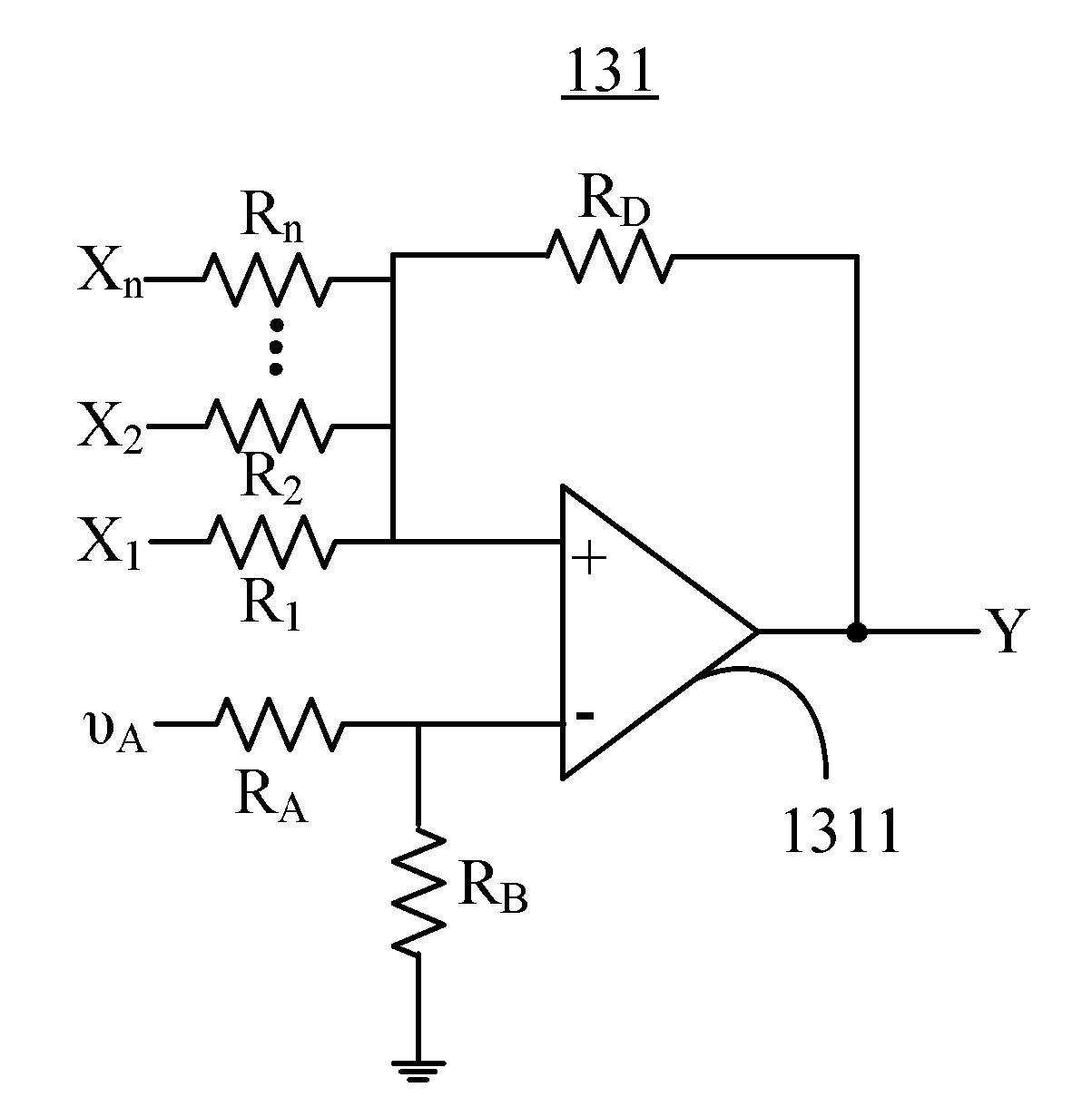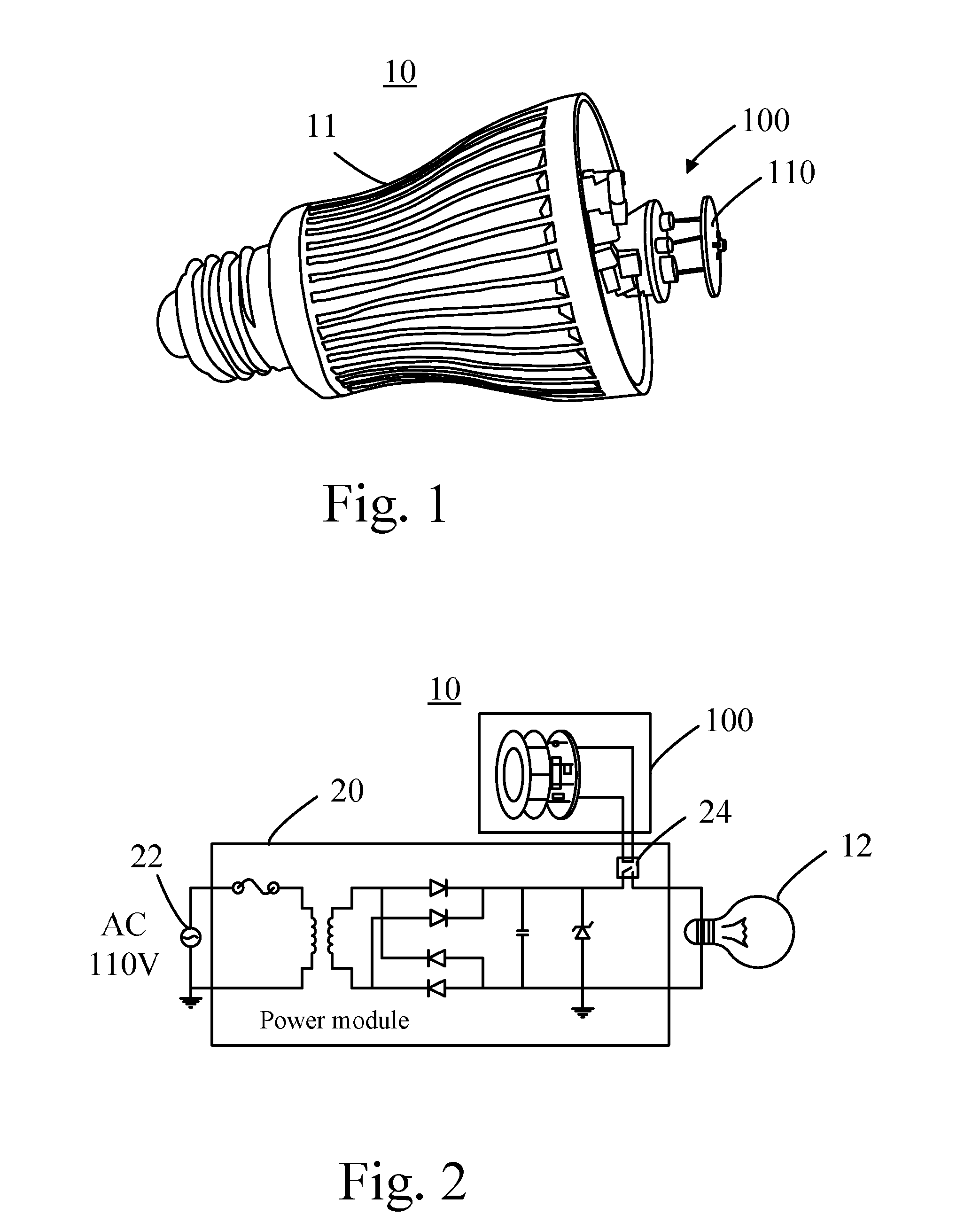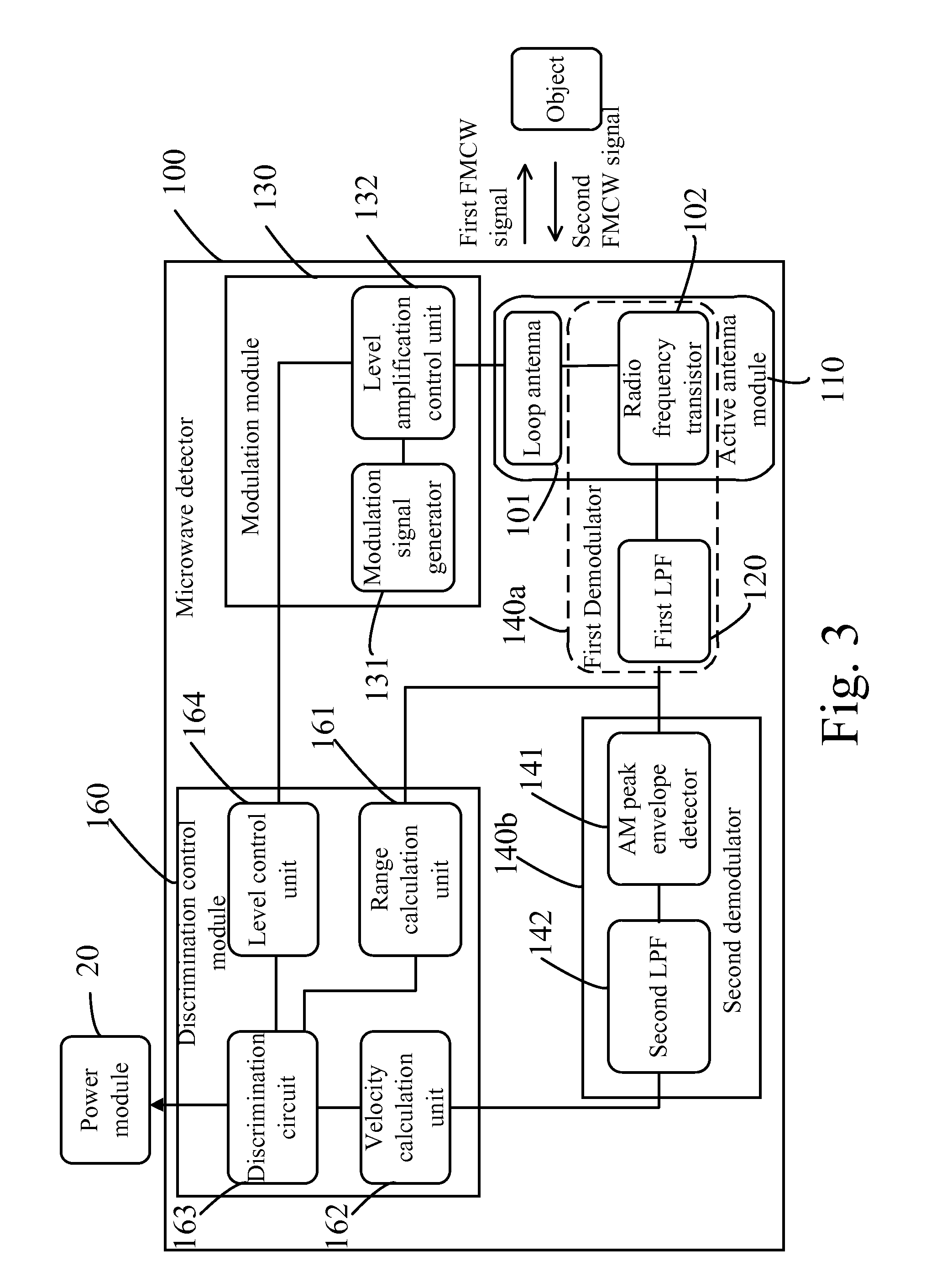Lighting Device with Microwave Detection Function
a technology of microwave detection and light source, which is applied in the field of light source, can solve the problems of difficult maintenance of the lamp system by an ordinary person, difficulty in adding an omnidirectional detection function to the infrared sensor, and large power consumption of the lamp system, so as to simplify and simplify the design of the digital signal processor of the conventional microwave sensor. , the effect of reducing the size of the microwave sensor
- Summary
- Abstract
- Description
- Claims
- Application Information
AI Technical Summary
Benefits of technology
Problems solved by technology
Method used
Image
Examples
Embodiment Construction
[0039]Spatially relative terms, such as “beneath”, “below”, “lower”, “above”, “upper” and the like, may be used herein for ease of description to describe one element or feature's relationship to another element(s) or feature(s) as illustrated in the figures. It will be understood that the spatially relative terms are intended to encompass different orientations of the device in use or operation in addition to the orientation depicted in the figures.
[0040]Please refer to FIG. 1 and FIG. 2. FIG. 1 illustrates a lighting device 10 according to an embodiment of the present invention. FIG. 2 is a functional block diagram showing the lighting device 10. The lighting device 10 comprises a lamp body 11, a light source 12, a microwave sensor 100, and a power module 20. The light source 12 may be a light emitting diode (LED). The microwave sensor 100 integrates a conventional active antenna and a conventional radio frequency (RF) module for calculating a range between the microwave sensor 10...
PUM
 Login to View More
Login to View More Abstract
Description
Claims
Application Information
 Login to View More
Login to View More - R&D
- Intellectual Property
- Life Sciences
- Materials
- Tech Scout
- Unparalleled Data Quality
- Higher Quality Content
- 60% Fewer Hallucinations
Browse by: Latest US Patents, China's latest patents, Technical Efficacy Thesaurus, Application Domain, Technology Topic, Popular Technical Reports.
© 2025 PatSnap. All rights reserved.Legal|Privacy policy|Modern Slavery Act Transparency Statement|Sitemap|About US| Contact US: help@patsnap.com



